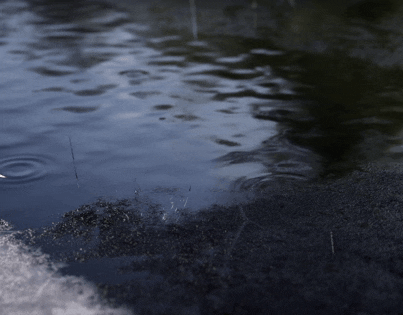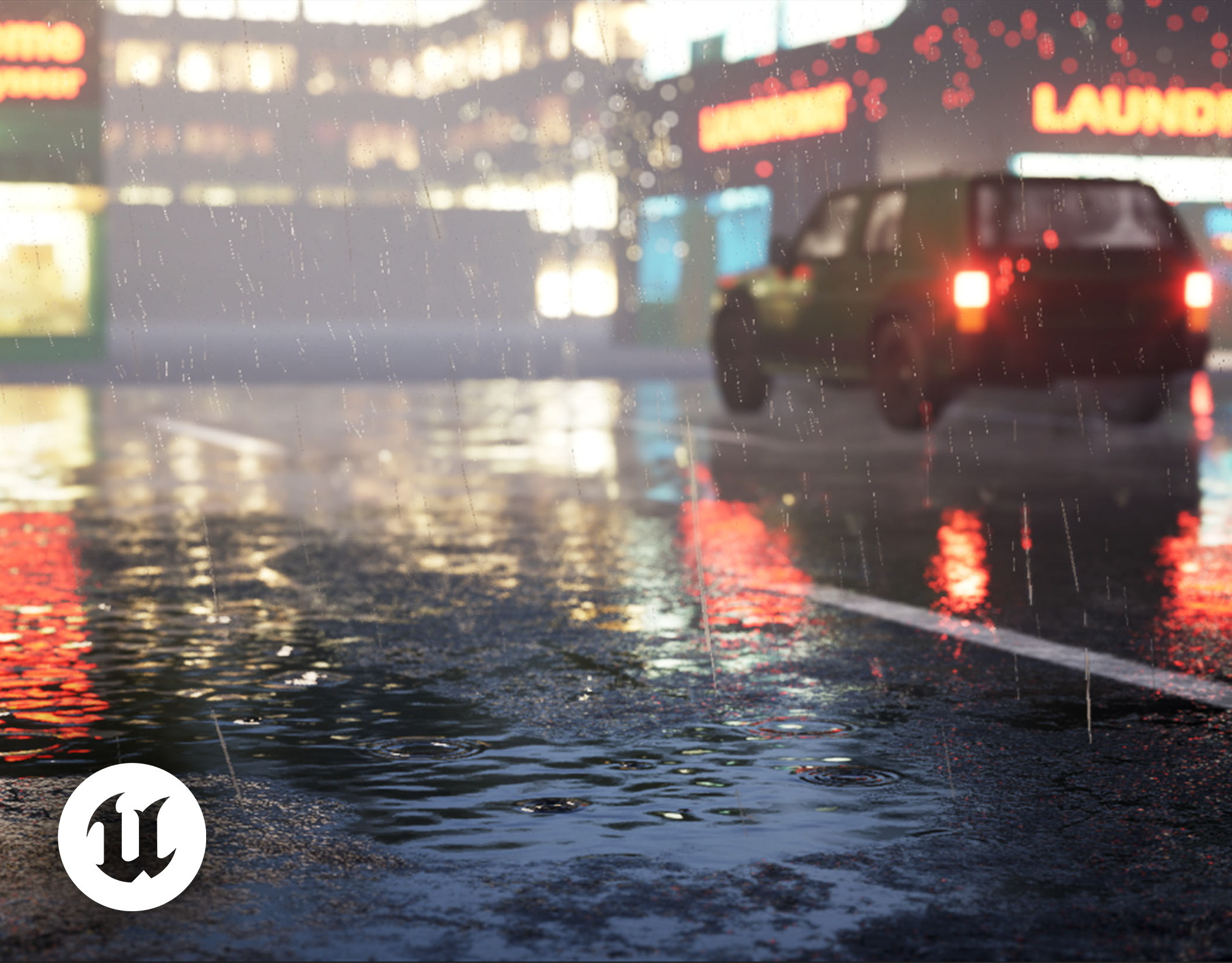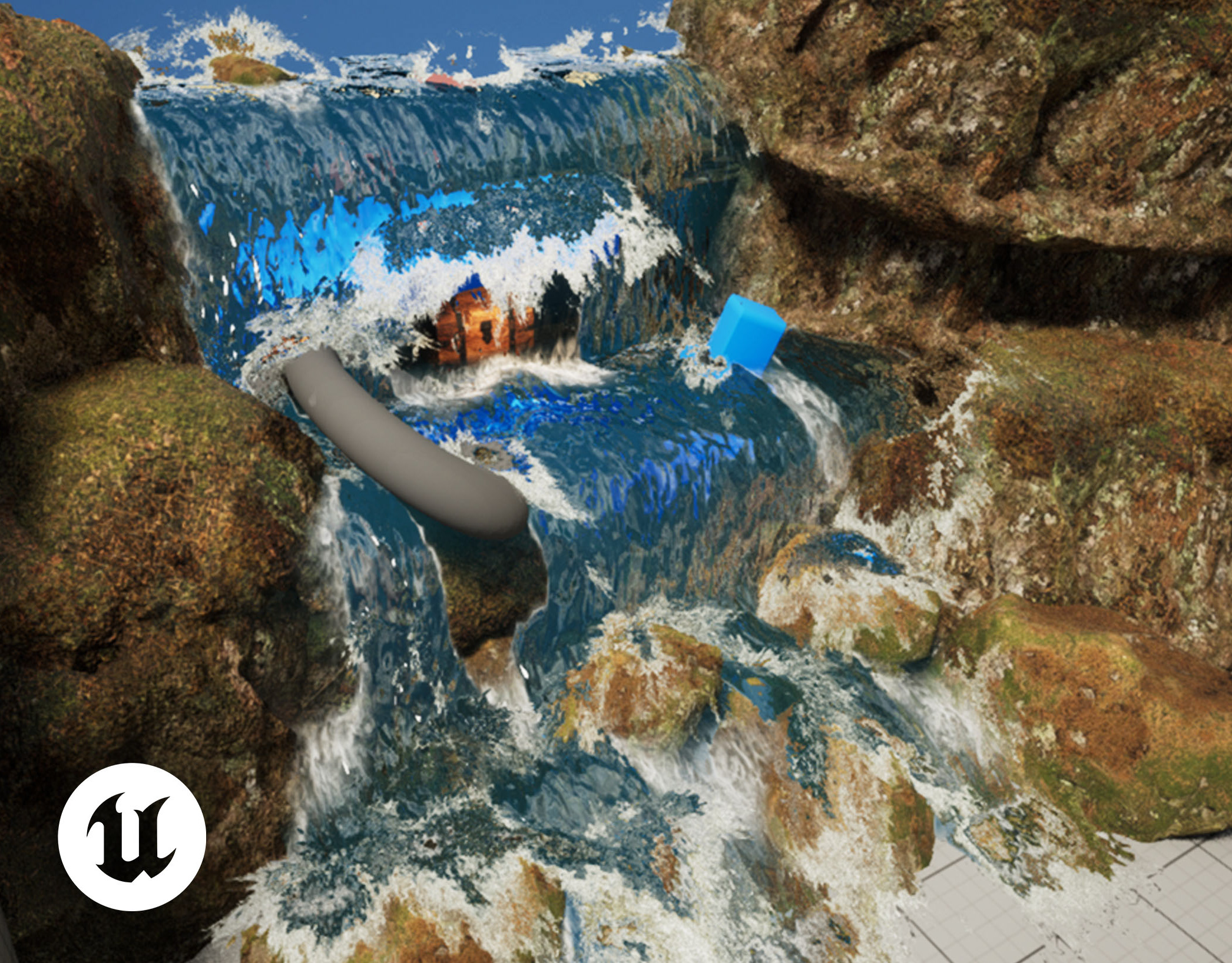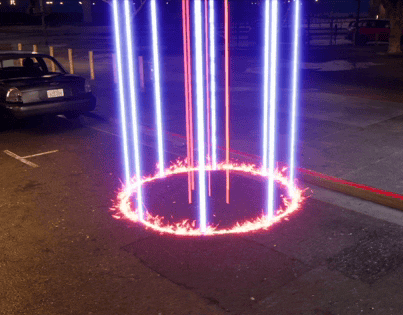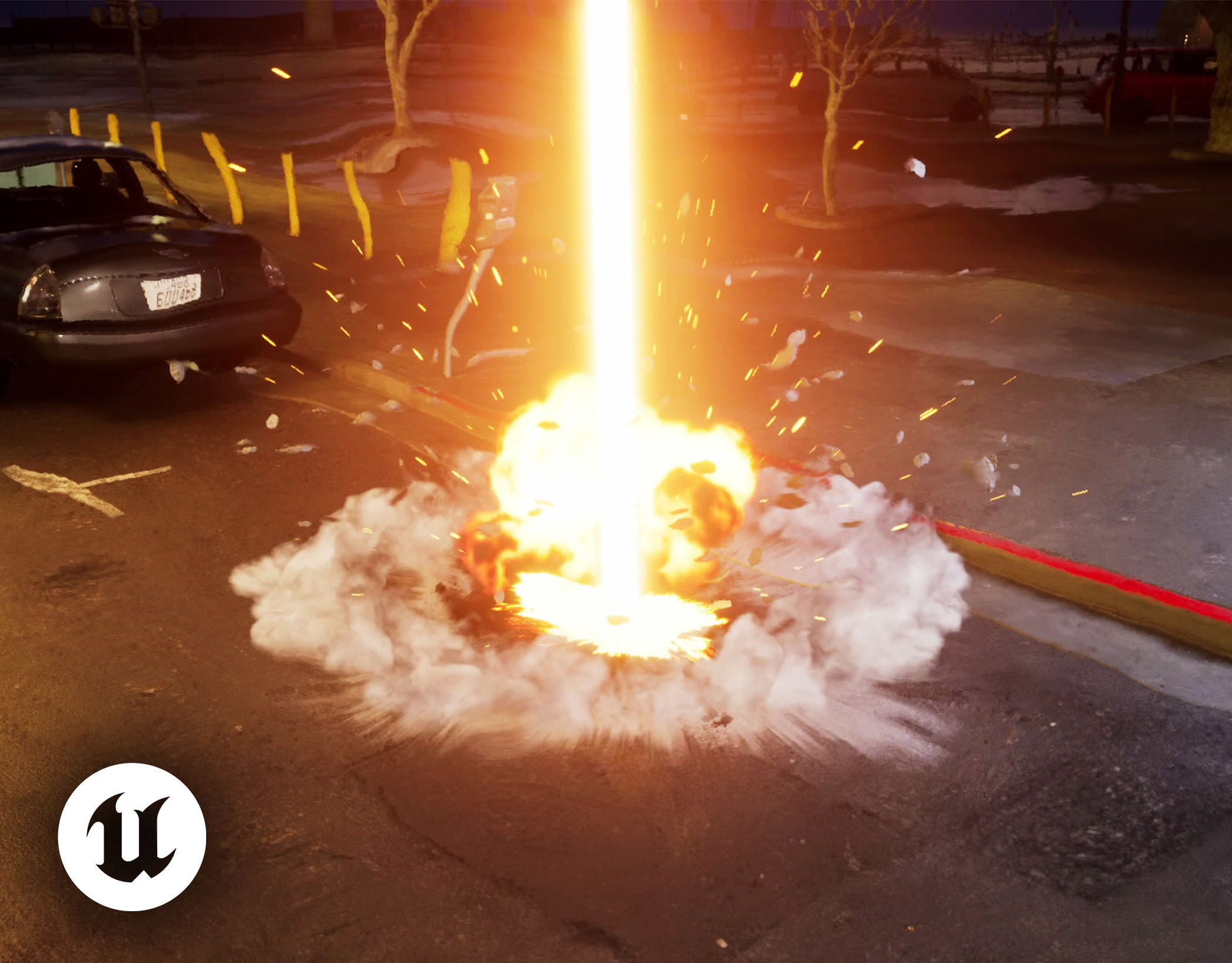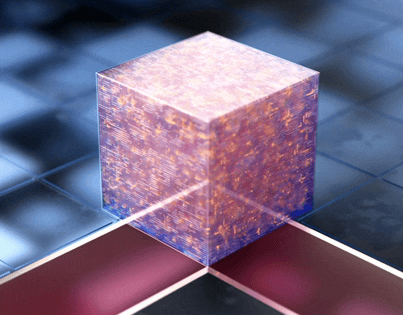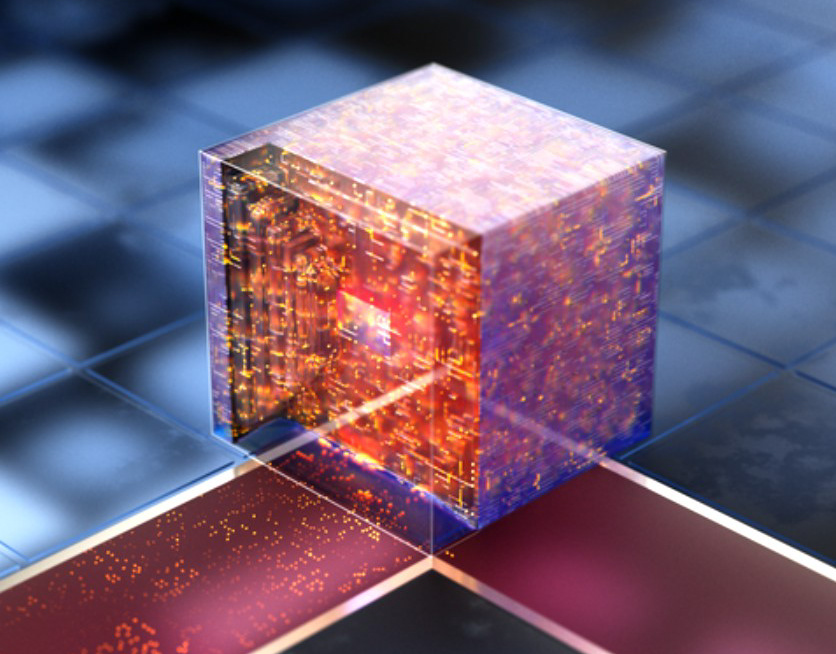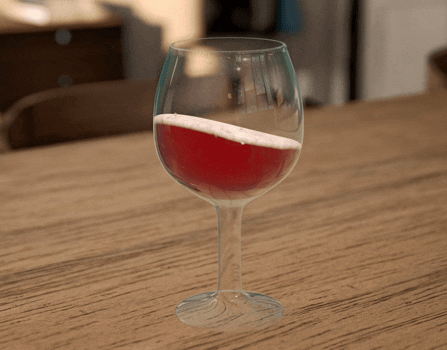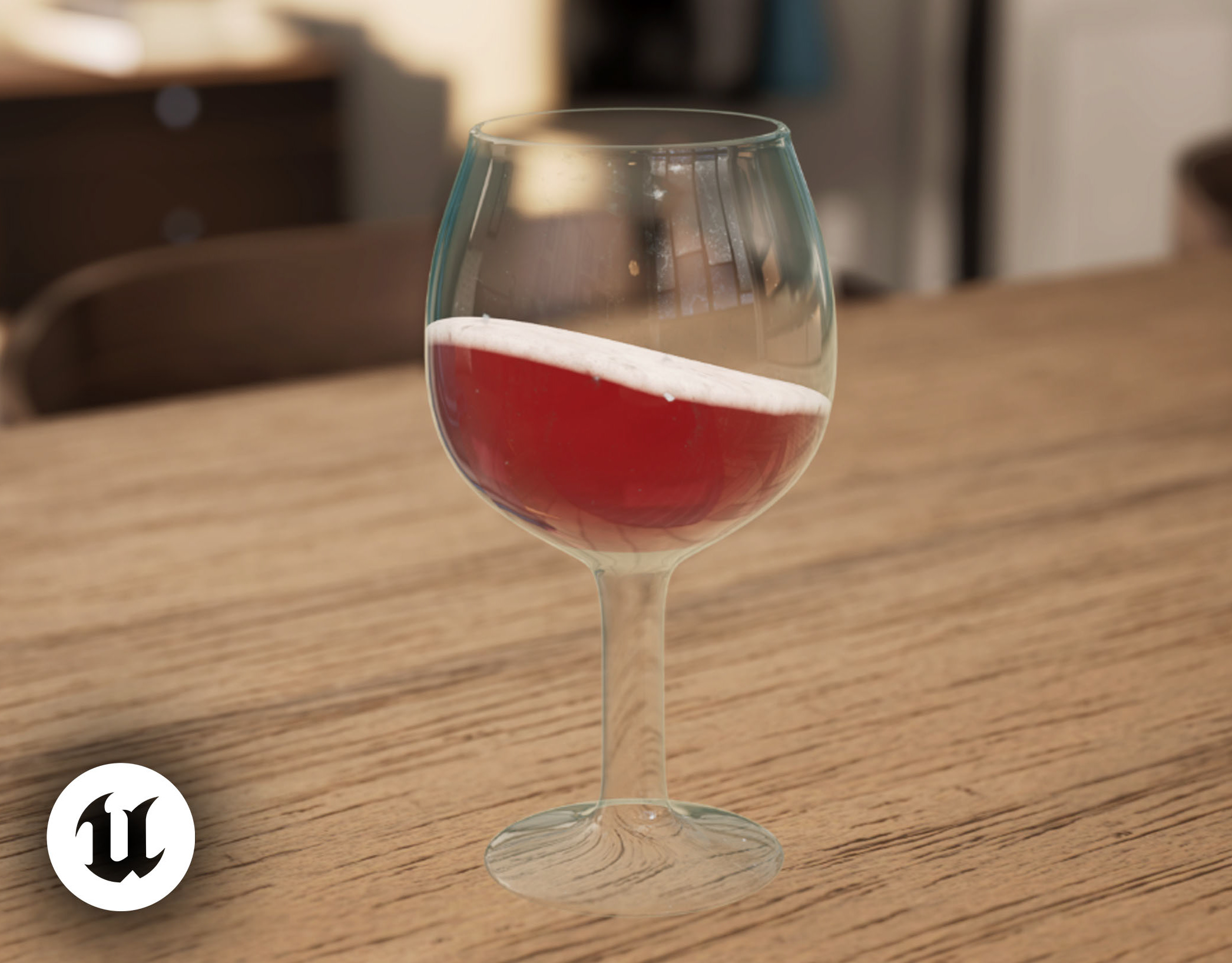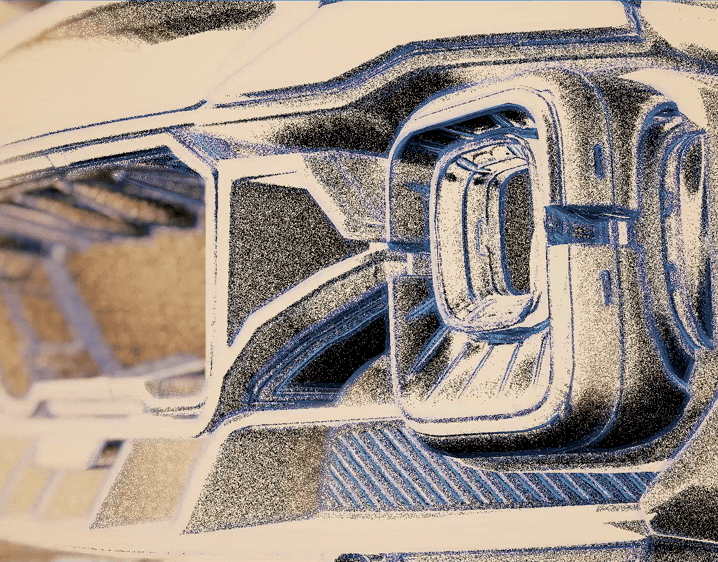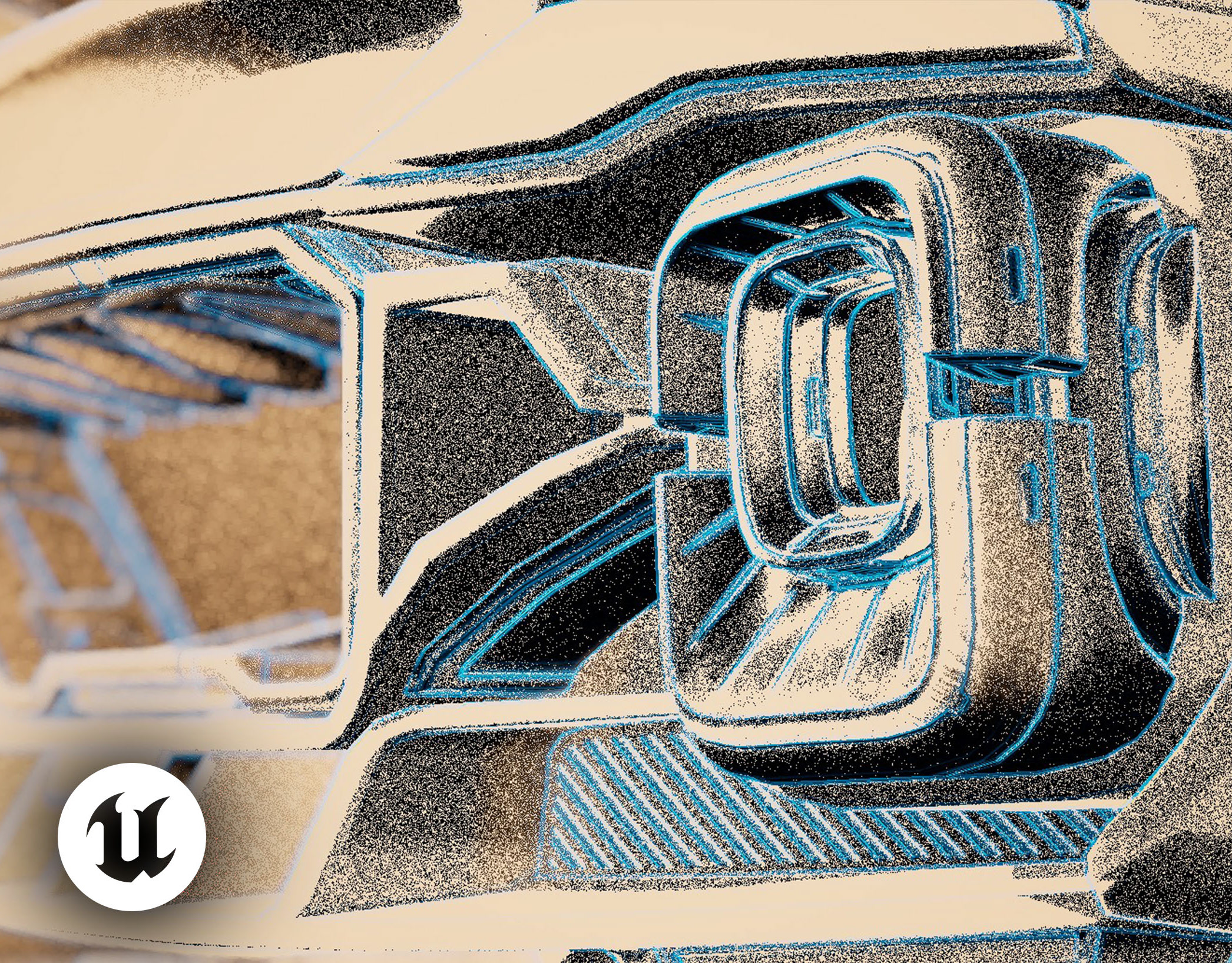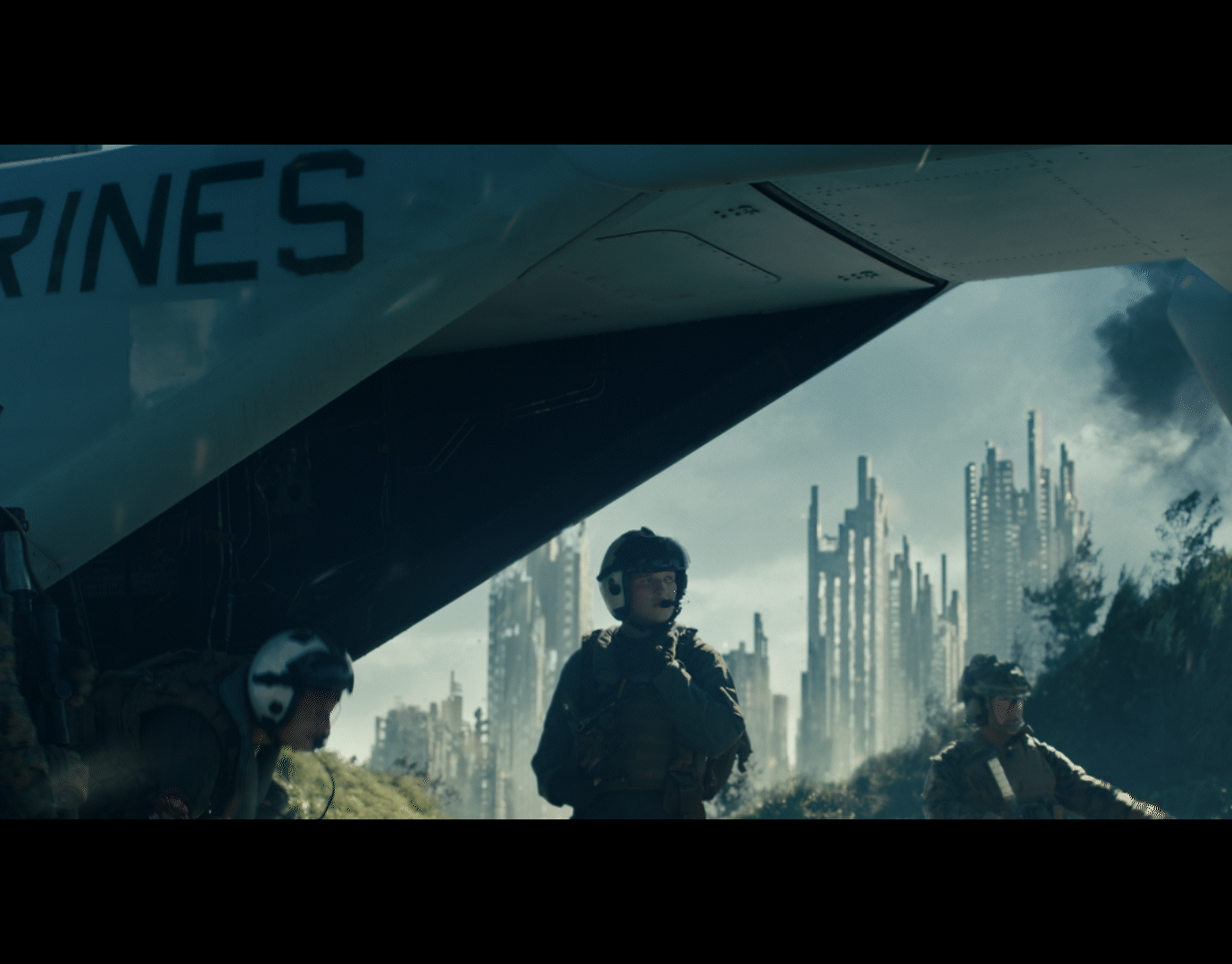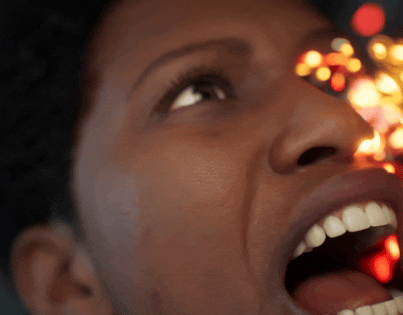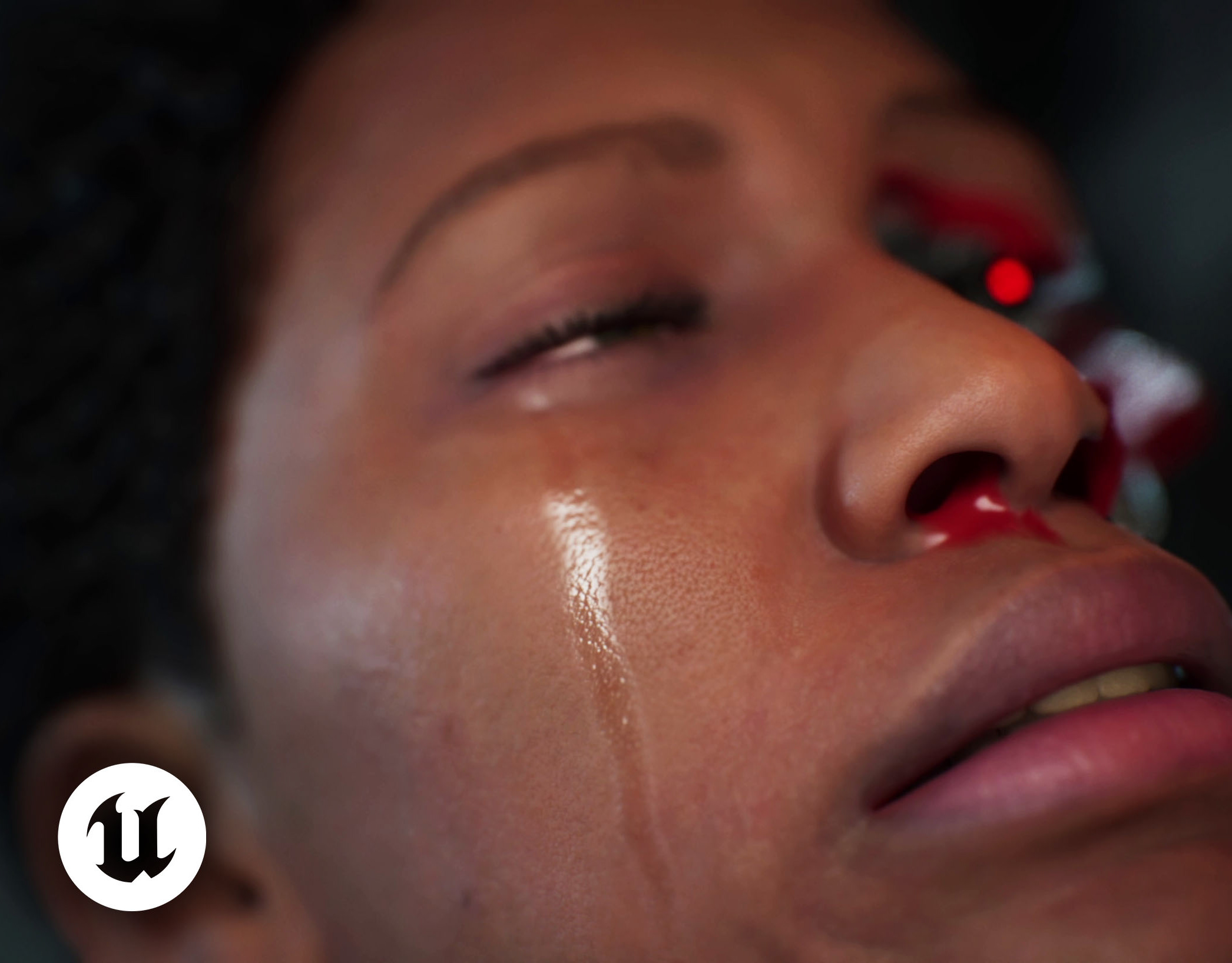Redirectable VATs (vertex animation textures) are an alternative to expensive real-time destruction solutions such as Chaos, while maintaining a higher level of interactivity than a regular vertex animation texture method. In this example, I explore rotating simulated pieces based on a projectile's direction of impact.
Realtime redirection of a rigid body simulation in Unreal
4-way simulations chosen by a projectile's impact direction
Houdini Setup:
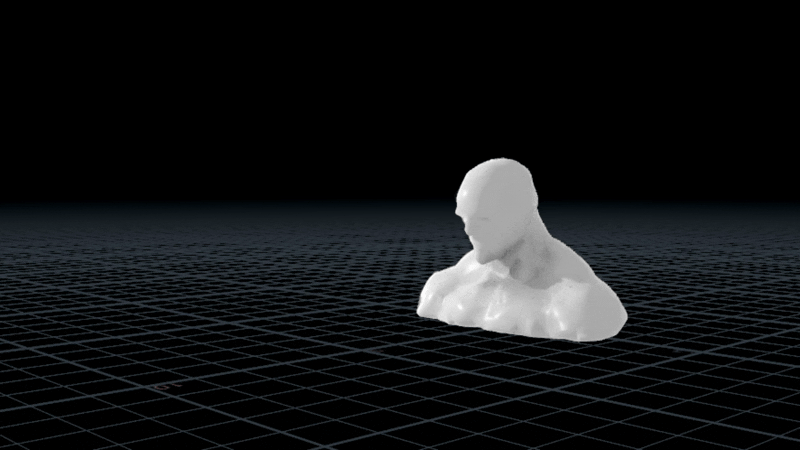
Rigid body and sprite simulations in Houdini
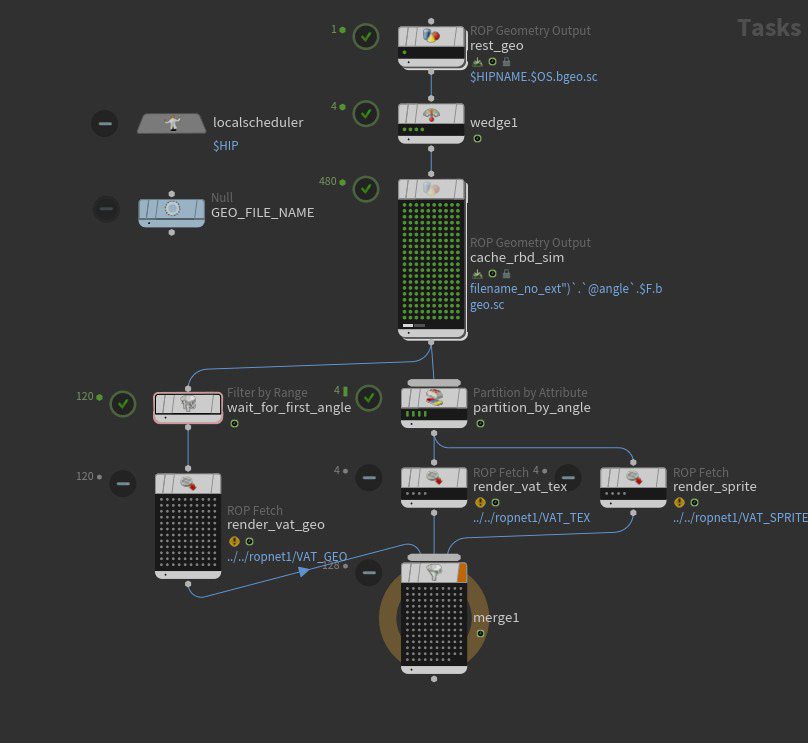
TOPS setup
The Houdini setup simulates and exports the 4-way rigid bodies and dust sprites in one go. Useful for processing many destructible props in a pipeline
Projectile FX
Blueprint Breakdown:
The VAT Destruction Blueprint works in 4 steps:
1. The projectile actor triggers the Break event and provides Projectile Direction & Impact Location variables. We also record the time of this event for later use in the material.
2. Choose the index of the material selector (0-3) based on projectile heading (0-360).
3. Async load the selected material instances for both the statue geometry mesh, and the sprite mesh (dust).
4. Finally, we set the material parameters for Break event Time, Impact Location (for the cracks effect), and Rotation Angle.
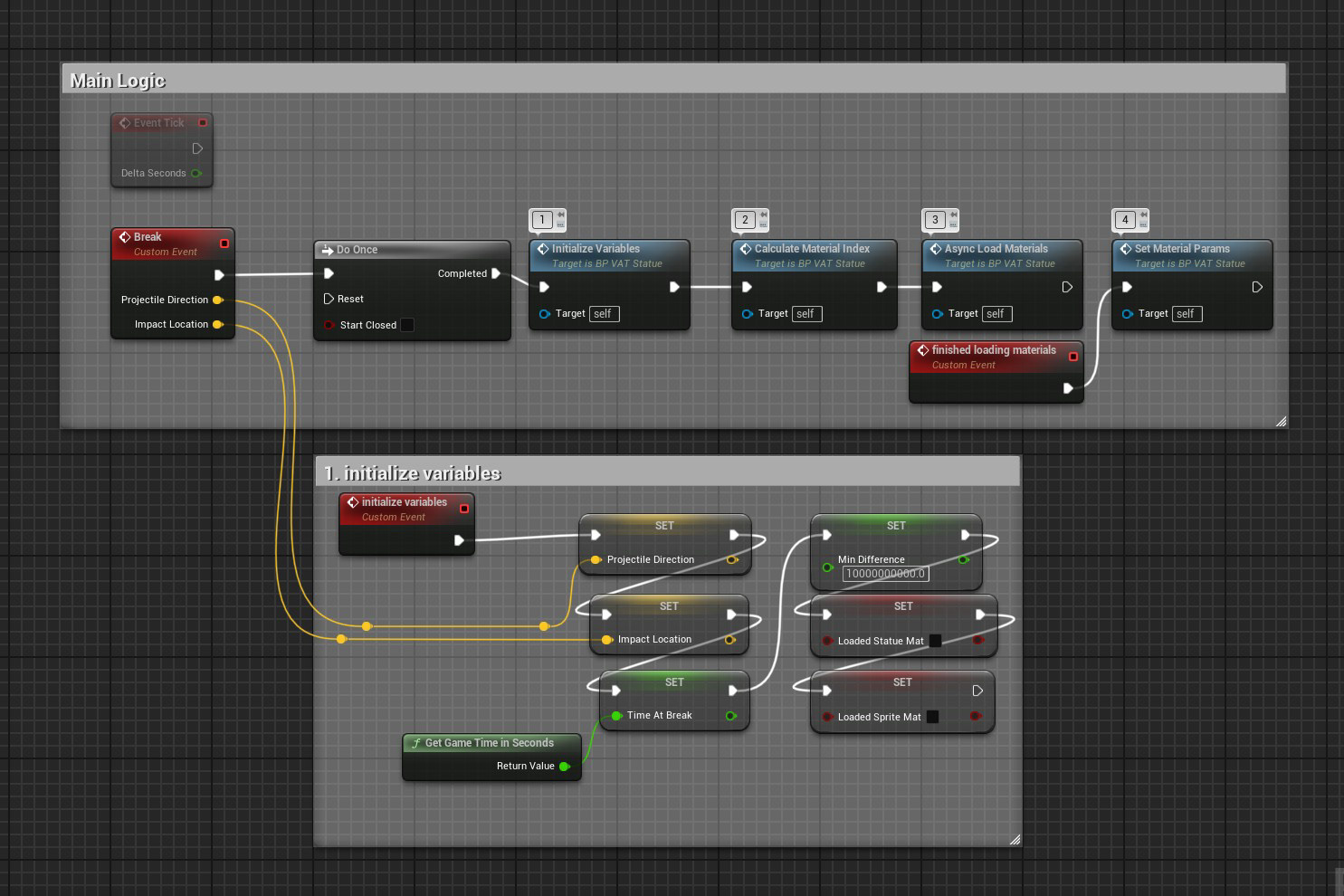
Main logic and variable initialization
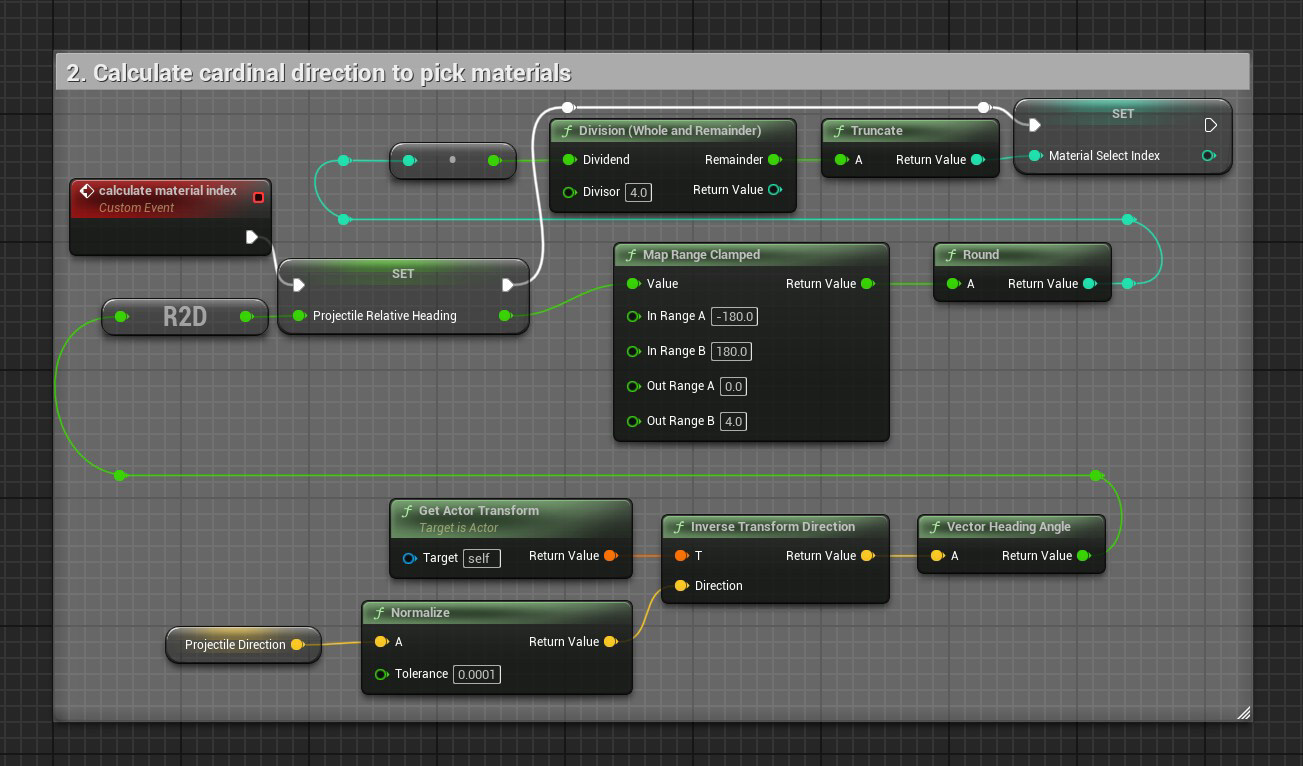
2. Choose a material index based on which of the four general directions the projectile hit
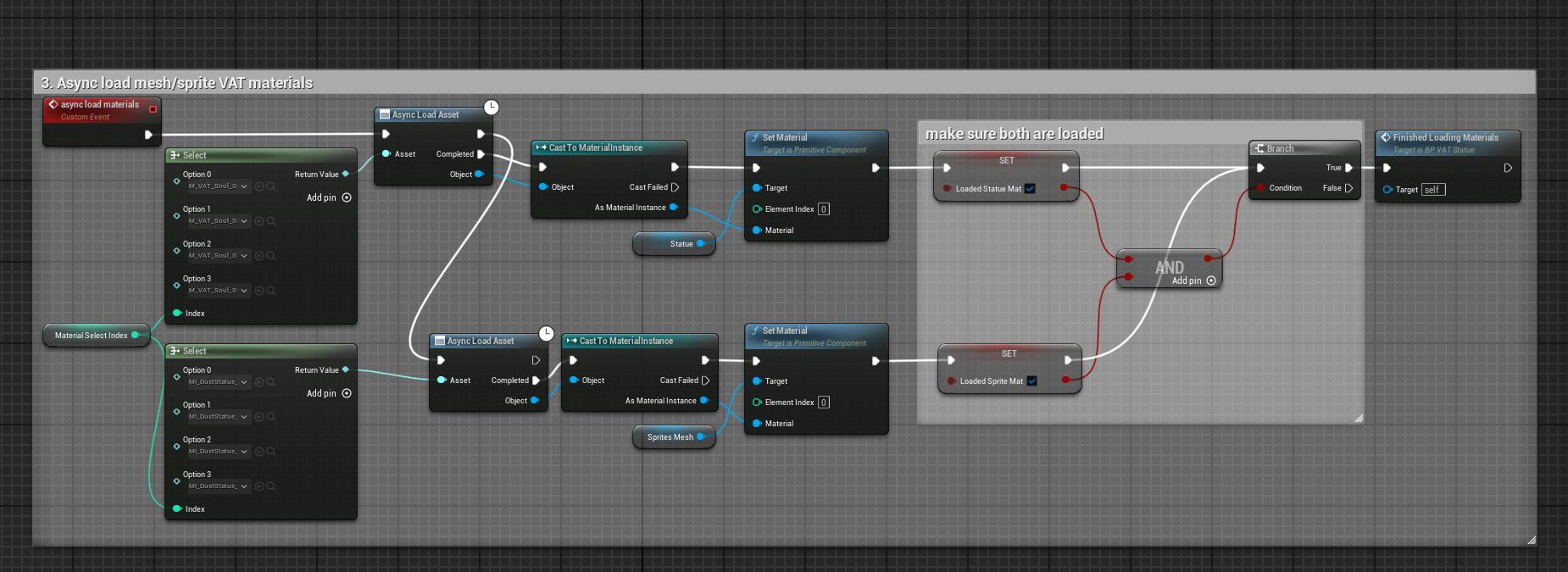
3. Async load the chosen mesh/sprite VAT material instance.
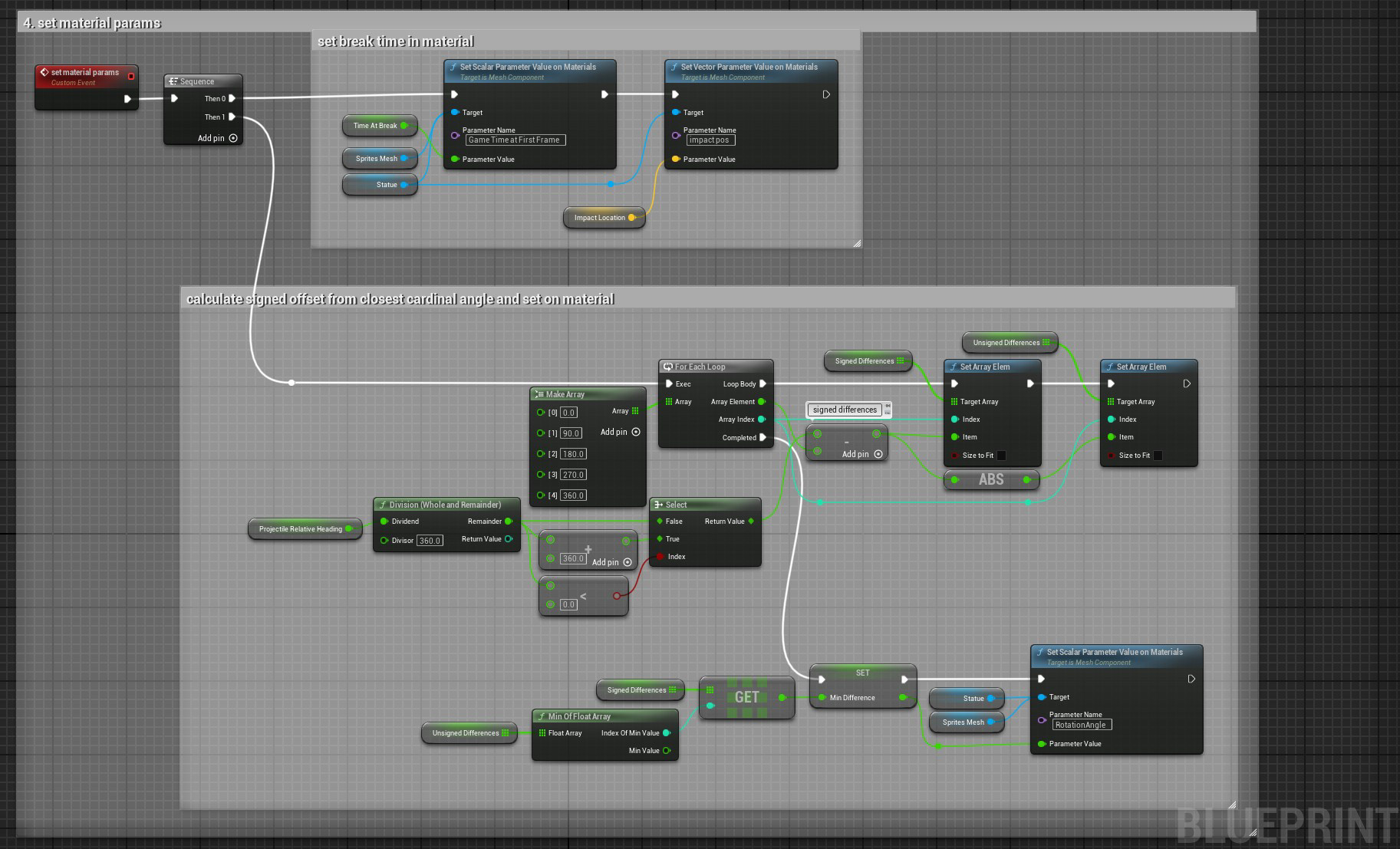
4. Finally, set material parameters once the material instances are loaded.
VAT Material Breakdown:
We plug the Houdini VAT material function in our material, using the distance between the pieces current position and their rest position as movement mask for the rotation functions.
The material function has been modified as seen in the optimization below.
Rotating the outputs of a modified Houdini VAT material function
Optimizations and Design Considerations:
Reducing texture samples with bi-linear filtering:
The unmodified Houdini rigid body VAT function interpolates the motion of pieces by sampling at the current frame and next frame, then interpolates the between the two positions. However, by using bilinear filtering we can sample "in between the pixels" for less than the cost of two texture samples.
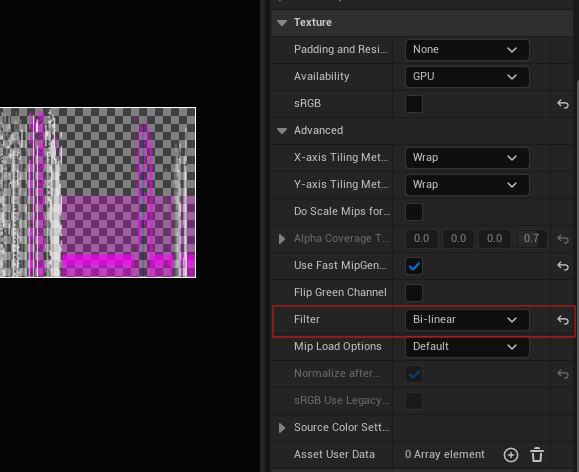
set filtering mode to bi-linear
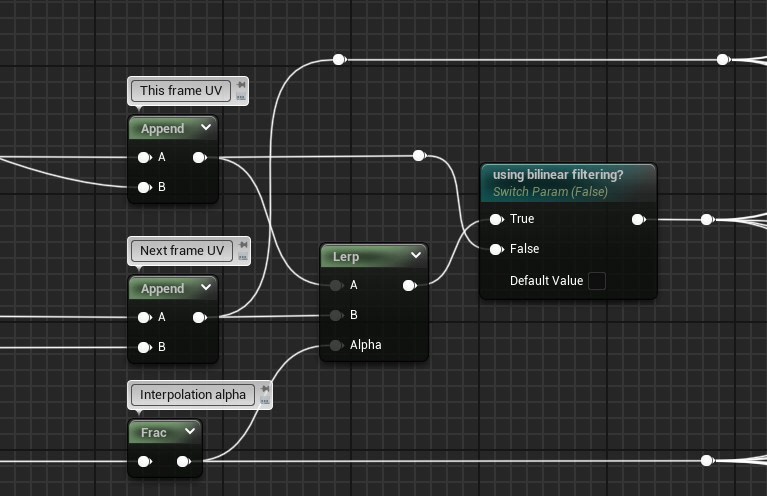
Modifying the UV handling inside the VAT material function
Async-load and soft references:
The system loads the appropriate material instance based on the direction of impact. Potentially avoiding the extra memory utilization for the unused textures.
